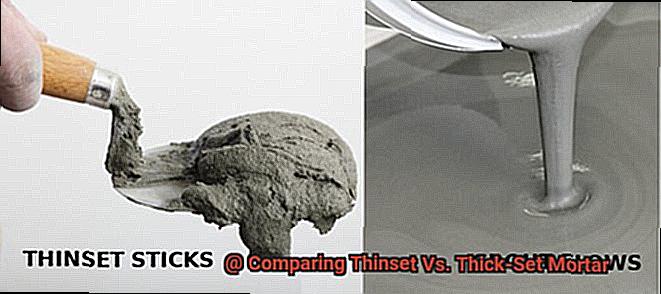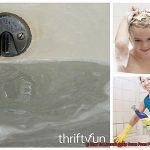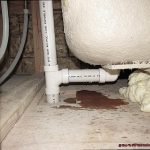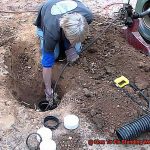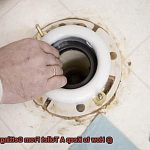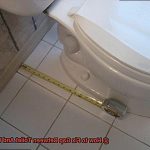Are you feeling overwhelmed by the sheer number of mortar options available for your tiling projects?
Fear not, because we’re here to simplify things for you. In this post, we’ll be discussing two types of mortar that often cause confusion: Thinset and Thick-set mortar.
Whether you’re a seasoned pro or a DIY enthusiast, our comparison guide will help you make informed decisions and ensure flawless execution. But before we dive into the nitty-gritty, let’s take a moment to appreciate an architectural wonder that showcases the importance of using the right type of mortar.
The Burj Khalifa, standing tall at 828 meters, boasts intricate tiling and stonework held together by none other than thinset mortar. Talk about strength and durability.
Now, let’s get down to business. We’ll compare and contrast Thinset and Thick-set mortar based on their composition, uses, and advantages.
Why is choosing the appropriate type of mortar so crucial? Because it can make or break your project’s finish.
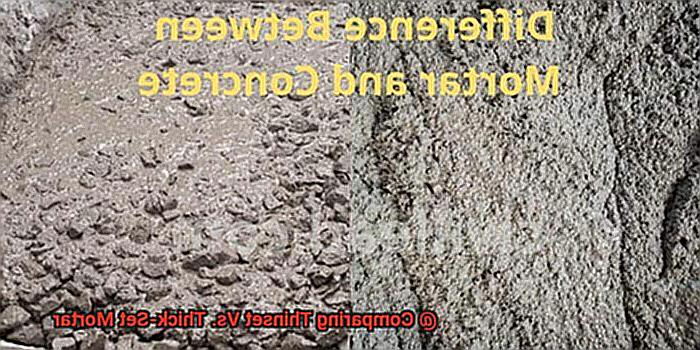
So, let’s find out.
Contents
What is Thinset Mortar?
This reliable and versatile adhesive is made from a mixture of cement, fine sand, and other additives to improve bonding and workability properties. One of the biggest advantages of using thinset mortar is its quick setting and curing time, which can help speed up installation times.
Additionally, it boasts excellent bonding strength and can be used on a variety of substrates, including concrete, plywood, and backer board. Thinset mortar comes in two main types: modified and unmodified.
Modified thinset contains polymers that improve its flexibility and adhesion, making it ideal for use with larger tiles or in areas prone to movement or vibration. On the other hand, unmodified thinset is a basic blend of cement and sand that is best used in areas with less movement or moisture.
When working with thinset mortar, it’s essential to mix it correctly according to the manufacturer’s instructions and apply it evenly to ensure proper bonding. It’s also critical to choose the right type of thinset for your specific project needs.
Compared to thick-set mortar, which requires a thicker layer of adhesive and longer drying time, thinset is an excellent choice for projects that need to be completed quickly. It’s also commonly used in areas with little moisture such as backsplashes or shower walls.
What is Thick-Set Mortar?
Then, you may have heard of “thick-set mortar,” also known as medium bed mortar or dryset mortar.
It’s a type of adhesive made from sand, cement, and water that has a thicker consistency than traditional thinset mortar. But why is it the go-to choice for professional tile installers?
One of the primary benefits of using thick-set mortar is its ability to level out uneven surfaces. If your walls or floors have slight variations in height or slope, thick-set mortar allows installers to build up the surface as needed, creating a level surface for the tiles or stones to be placed on.
This feature makes it ideal for use in areas where a smooth surface is essential. Another advantage of thick-set mortar is its longer working time compared to thinset mortar.
This means that installers can spread it over larger areas without worrying about it drying out too quickly. This feature makes it easier to work with when installing larger tiles or stones that require more time to position correctly.
Thick-set mortar also has a strong bond with various types of substrates, including concrete, cement board, and plywood. This bond ensures that the tiles or stones remain in place even under heavy use or foot traffic, making it a reliable adhesive option for high-traffic areas.
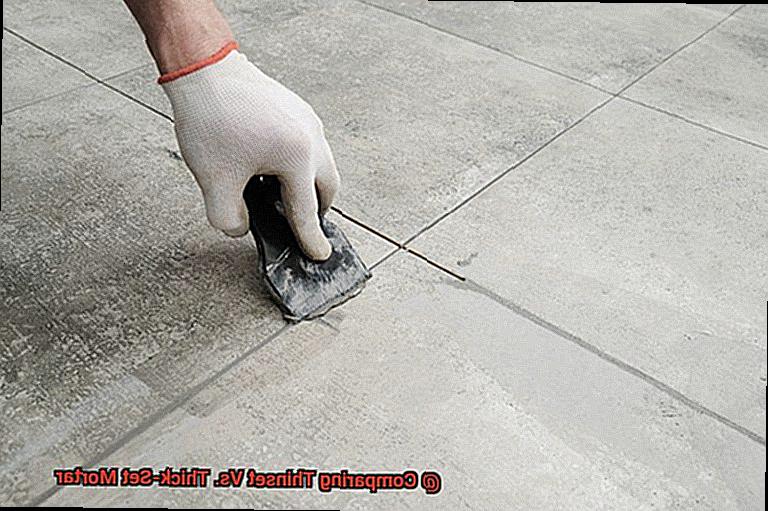
Its thicker consistency allows for easy leveling of uneven surfaces, while its extended working time and strong bond make it a popular choice among professional tile installers.
Differences Between Thinset and Thick-Set Mortar
It’s called “thinset” because it forms a thin layer of adhesive, usually no more than 1/8 inch thick. Composed of cement, sand, and a water-retaining agent, thinset dries slowly and bonds tightly to the surface.
It’s ideal for bonding tiles to surfaces like concrete or backer board, as well as for small repairs or patching. On the other hand, thick-set mortar is a cement-based mortar used to set tiles in place.
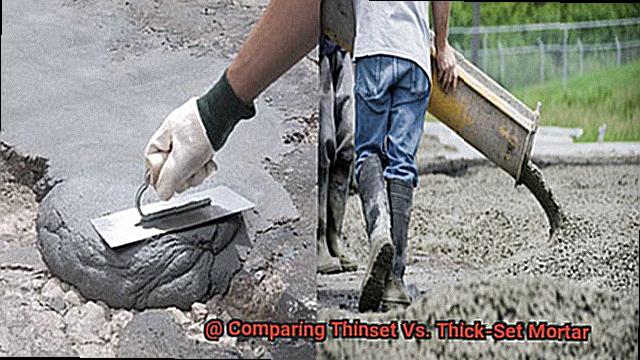
It’s called “thick-set” because it forms a thicker layer of mortar, usually 3/8 inch to 1/2 inch thick. Thick-set mortar is also composed of cement, sand, and a water-retaining agent.
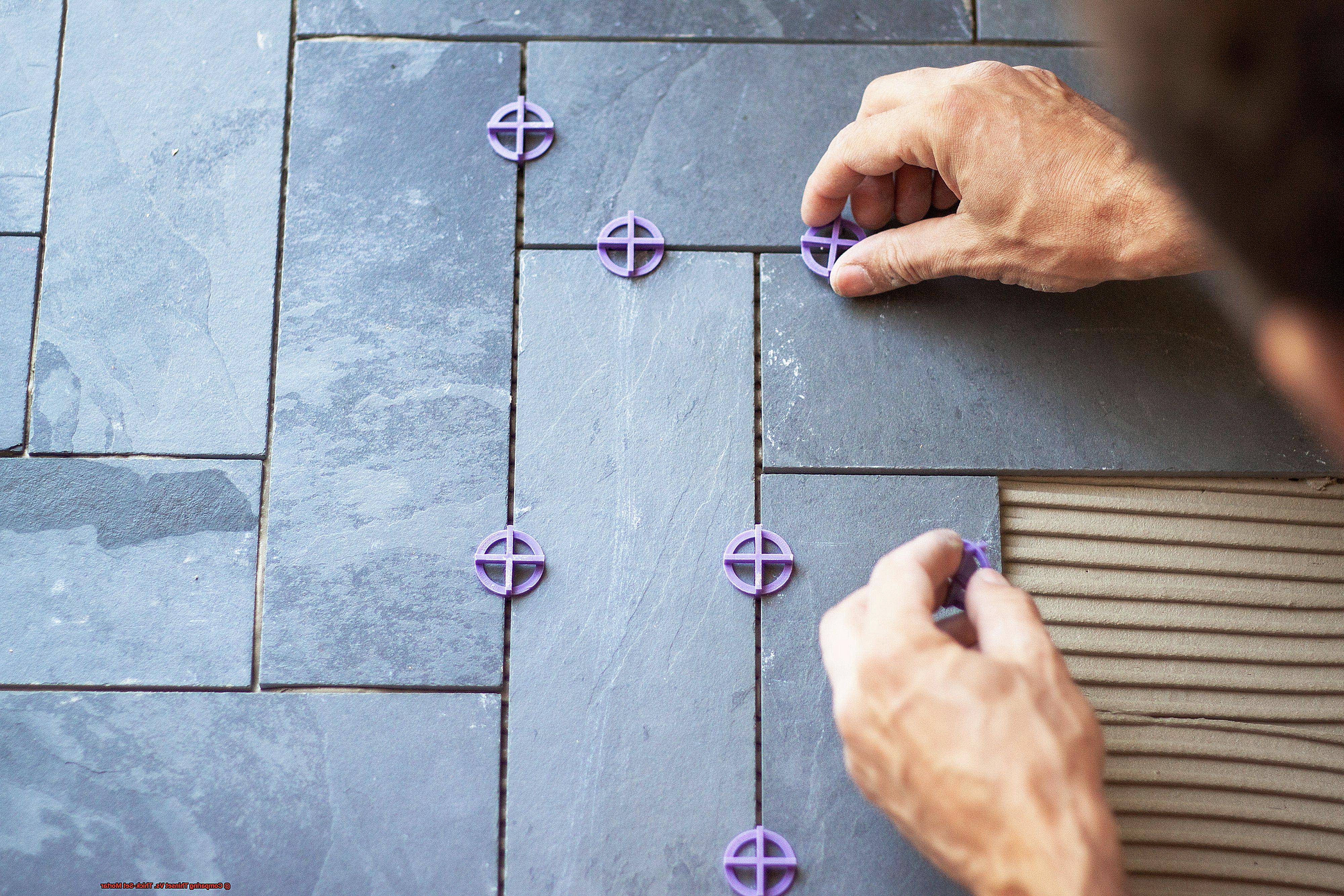
It’s primarily used for setting large-format tiles or heavy stones on floors or walls. The main difference between thinset and thick-set mortar is their thickness and intended use.
Thinset is used primarily for bonding tiles to surfaces, while thick-set mortar is used primarily for setting large-format tiles or heavy stones on floors or walls. Another important difference between them is their drying time.
Thinset dries quickly and can be ready for grouting within 24 hours. In contrast, thick-set mortar takes longer to dry due to its thickness and water-retaining agent.
It can take several days before it’s ready for grouting. When it comes to application method, thinset is usually applied with a notched trowel, while thick-set mortar requires the use of a trowel with a larger notched edge due to its thickness.
Thickness
When it comes to tiling, selecting the right type of mortar can make all the difference in achieving a long-lasting and durable finish.
Thinset and thick-set mortars are two popular options that differ in thickness applications. Thinset mortar is a combination of cement, sand, and a water-retaining agent that can be thinly spread on surfaces like floors and walls.
This type of mortar is typically applied at a thickness of around 1/8 inch to 1/4 inch, making it ideal for bonding tiles to concrete or backer board. While thinset may seem like the more practical choice due to its ease of use and thin application, it does have some limitations when it comes to supporting heavy loads or larger tiles.
On the other hand, thick-set mortar is a mixture of sand, cement, and lime that is designed to be used at thicknesses of 3/8 inch or greater. This type of mortar is often used for large-format tiles or applications where there will be heavy traffic or loads.
Compared to thinset, thick-set mortar is much stronger and can handle heavier loads without cracking over time. One significant advantage of using thick-set mortar is that it can create a more level surface for tiles, which is paramount in applications where flatness is critical.
This type of mortar can also provide better bond strength for heavier materials such as natural stone. Ultimately, the choice between thinset and thick-set mortar depends on your project’s specific needs.
Drying Time
Thinset mortar, being the more practical option due to its ease of use and thin application, dries much faster than thick-set mortar. This is because of its unique composition, which includes a water-retaining agent that facilitates quick and efficient drying.
Typically, thinset mortar takes only 24-48 hours to fully set. Conversely, thick-set mortar is made up of a mixture of Portland cement and sand without any water-retaining agents.
This results in a slower drying time, usually taking 3-5 days to completely set. However, it’s essential to note that thicker applications of thinset mortar can also result in longer drying times.
When deciding which type of mortar to use for your project, it’s crucial to take into consideration your specific requirements and any time constraints you may have. If time is of the essence and you need a quick installation, thinset may be the better option.
However, if durability and strength are top priorities, thick-set mortar may be the better choice despite its longer drying time. It’s also crucial to follow manufacturer instructions when it comes to drying time for both types of mortar.
Advantages of Using Thinset
One of the most significant advantages of thinset is its exceptional bonding properties.
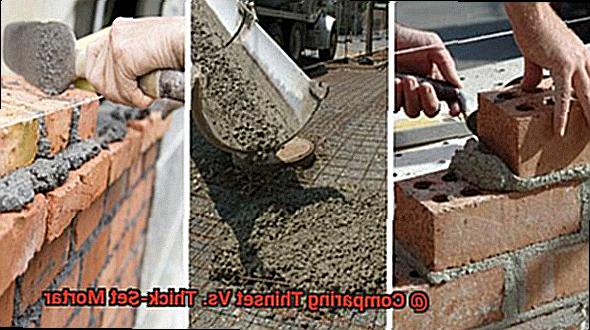
It effectively adheres to both the substrate and tiles, creating a stronghold that can withstand the test of time. This feature is especially crucial when installing large or heavy tiles, as they need a strong adhesive to prevent cracking or shifting.
In addition to its bonding strength, thinset’s flexibility is also worth mentioning. Whether you’re installing tiles on cement board, concrete, plywood or even existing ceramic tile, thinset can handle it all.
It’s also suitable for both indoor and outdoor use, which makes it an incredibly versatile choice for various applications. Another advantage of using thinset is its water resistance.
When mixed with water, thinset creates a waterproof barrier that helps prevent water damage and mold growth in wet areas like bathrooms and kitchens. What’s more, many thinset products contain additives that enhance their resistance to chemicals and stains, making them ideal for high-traffic areas.
Overall, thinset offers several benefits over thick-set mortar. Its superior bonding strength, flexibility, and water resistance make it an ideal option for most tile installations.
Advantages of Using Thick-Set
When it comes to tile installation, the choice between thinset and thick-set mortar can be a tough one.
But if you’re looking for an adhesive that offers superior strength, durability, and versatility, thick-set mortar may be the way to go. One of the biggest advantages of thick-set mortar is its ability to support heavy tiles or stones.
Unlike thinset, which may struggle with larger-sized materials, thick-set mortar can handle the weight and provide a stable base. This makes it a great option for high-traffic areas or outdoor spaces where durability is key.
But that’s not all. Thick-set mortar also excels at leveling uneven surfaces.
Whether you’re dealing with an older home with uneven floors or a wall that needs some extra support, thick-set mortar can help create a level base for your tiles or stones. This means fewer headaches and less money spent on extensive subfloor repairs.
Another key benefit of thick-set mortar is its resistance to moisture and water damage. Unlike thinset, which can struggle in wet environments, thick-set mortar is designed to withstand frequent exposure to water.
So whether you’re working on a bathroom remodel or an outdoor kitchen, you can trust that your tiles or stones will stay put and look great for years to come. And let’s not forget about curing time.
While thinset may dry quickly, the longer curing time of thick-set mortar actually works in your favor. With more time to adjust your tiles or stones during installation, you have greater control over the finished product.
mdsgZkcQXBo” >
Conclusion
To achieve a flawless finish for your tiling project, choosing the right type of mortar is crucial.
Thinset and thick-set mortars are two popular options, each with their own unique advantages and disadvantages. Thinset mortar is a reliable and versatile adhesive that sets quickly and boasts excellent bonding strength.
It’s perfect for areas with little moisture, such as backsplashes or shower walls, and can be used on various substrates. On the other hand, thick-set mortar is a cement-based adhesive with a thicker consistency than traditional thinset mortar.
It’s primarily used for setting large-format tiles or heavy stones on floors or walls, providing better bond strength for heavier materials like natural stone. When deciding between thinset and thick-set mortar, consider factors such as thickness, drying time, bonding strength, flexibility, water resistance, ability to level uneven surfaces, and intended use.
Whether you’re an experienced pro or a DIY enthusiast looking to tackle your next tiling project with confidence – understanding the differences between these two types of mortars is key.

